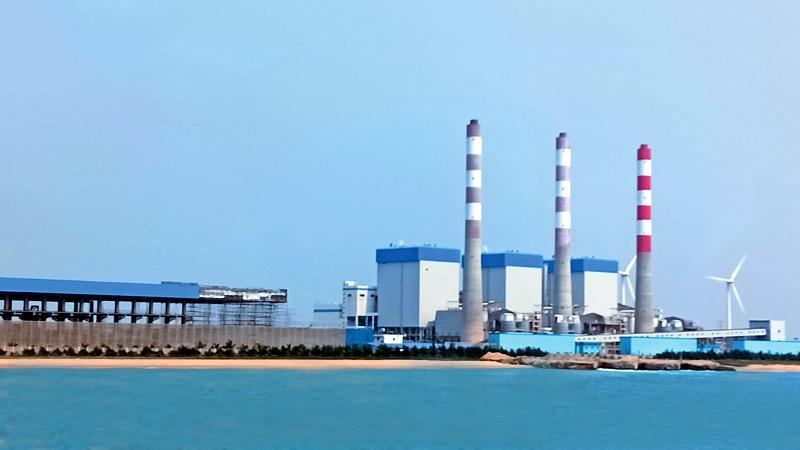
 The Lakvijaya Coal Power Plant, better known as the Norochcholai Coal Power Plant (NCPP) which generates over 35% of the total energy requirements of Sri Lanka, has weathered many myths, political and technical storms and is slowly moving towards overcoming them.
The Lakvijaya Coal Power Plant, better known as the Norochcholai Coal Power Plant (NCPP) which generates over 35% of the total energy requirements of Sri Lanka, has weathered many myths, political and technical storms and is slowly moving towards overcoming them.
 The project built on 270 acres was constructed in three phases and completed in September 2014 by then President Mahinda Rajapaksa generates 900 MW. The first 300-megawatt phase was completed and commissioned by President Mahinda Rajapaksa in March 2011.
The project built on 270 acres was constructed in three phases and completed in September 2014 by then President Mahinda Rajapaksa generates 900 MW. The first 300-megawatt phase was completed and commissioned by President Mahinda Rajapaksa in March 2011.
According to the Ceylon Electricity Board, the US$ 455 million first phase generates nearly 1.7 TWh of electricity annually — a significant amount when compared to Sri Lanka’s total production of 11.5 TWh in 2011.
The plant is connected to the grid via 115 km (71 miles) 220-kilovolt transmission line to Veyangoda. The first advantage that the coal power plant brought to Sri Lanka was a steady and low cost electricity supply to the national grid, helping to reduce the unit cost from the Rs 11 per unit to Rs 5 per unit at the time the plant opened.

The lone coal power generation plant, was first accused of emitting harmful fumes and ash to the environment and was killing the green environment. “This is completely false as today we can see more trees in the area than before the project started. Also today there is more cultivation by farmers than before we started the project. We too have planted over 20 acres Kadalana trees,” said NCCP Manager Indrasiri Gallage.
With the advancement of technology, the smoke from the three towers are no more a daily occurrence. We have also fitted an electrostatic precipitator to reduce the ash getting out of the power plant’s chimneys. “In fact the plant is selling out these ‘bottom ash’ to cement manufactures and are making millions.”
He explained that when the power plant was commissioned it was said that due to maintenance, technical and other service requirements the success of the power plant is only 85%. “This is why there are power breakdowns and we have now made the plant 90% efficient and breakdowns are minimising.”
Unlike a hydro power plant, a coal power turbine generates a huge heat of around 450% centigrade as against the 150% from a hydro power turbine. “Due to this it takes around 15 days for the turbine to cool down until a repair could be done. This is why whenever there is a breakdown at Lakvijaya Coal Power Plant, it takes a longer period to repair it.”
Coal power plants world over also need to be serviced and when this requirement arrives, the plant is shut down.
Justifying the building of the coal power plant he said it was a timely and right step taken by the then government.
Unlike hydro power which dries up during drought, coal power generation is reliable and is also the second cheapest power source after hydro.

Another advantage is a non-requirement of large storage tanks, or barrels to store coal. “After importing the coal from Indonesia or South Africa we store it in our yard. Coal also does not evaporate.
“Coal is mostly carbon with variable amounts of other elements; chiefly hydrogen, sulfur, oxygen and nitrogen. Coal is formed when dead plant matter decays into peat and is converted into coal by the heat and pressure of deep burial over millions of years. Hence it is not poisonous. Coal deposits would be in the world for at least another 60 years.”
“Coal power generation is still a preferred cheap energy source due to its many advantages. Indonesia will have 50% of its energy requirement fulfilled by coal power by 2030 while Vietnam follows with 45% and Bangladesh with 30%.
“During its pre-development stages, protests were launched by residents living at the project site, claiming that they were deceived by the Government but ironically today most of them are either working at the plant or enjoying multiple benefits due to its opening.
“The Lakvijaya Coal Power Plant, is also a much sought after as a wedding back drop venue as well.”
